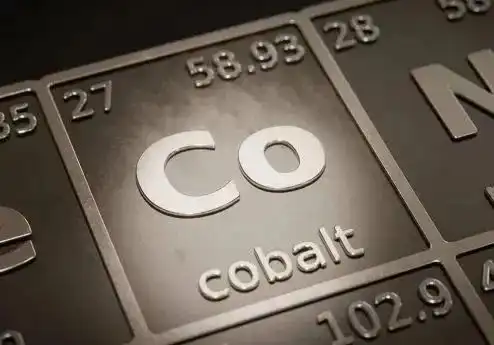The oversupply of battery metals intensifies and it is difficult to get out of the "bear market" in the short term
Currently, the development of electric vehicles in Europe and the United States is slowing down, but key battery metals are still releasing new production capacity, which will undoubtedly aggravate oversupply and it may be difficult to get out of the "bear market" in the short term.

Entering March, the cobalt market continued to be hit by oversupply, and prices continued to fall. According to the latest statistics from the Global Economic Indicators Network, cobalt prices have dropped by 2.01% this year. As of March 11, cobalt prices were US$28.55 million/ton, down 70% from the historical high in the same period in 2018, and the annual decline in 2023. It reached 16.47%.
Lithium and nickel prices also showed a downward trend. According to data from the London Metal Exchange (LME), the world's largest non-ferrous metals exchange, on March 12, the LME lithium hydroxide two-month forward contract price dropped to US$13,300 per ton, and only two days later it dropped to US$13,276 per ton; On March 12, the LME nickel three-month forward contract price was US$18,377 per ton, and two days later it dropped to US$18,346 per ton. Currently, the development of electric vehicles in Europe and the United States is slowing down, but key battery metals are still releasing new production capacity, which will undoubtedly aggravate oversupply and it may be difficult to get out of the "bear market" in the short term.
Market looks cautiously at cobalt supply and demand situation
British cobalt trader Darden Commodities released its latest annual assessment report, pointing out that as global demand for electric vehicles slows significantly, the cobalt market will remain oversupply in the medium to long term, and this situation is expected to continue until 2028. The International Cobalt Industry Association predicts that cobalt supply in 2024 will be approximately 305,000 tons, while demand will be approximately 251,000 tons.
Andrés Gerbbons, director of Darden Commodities, said:"Last year, cobalt production increased in Congo (DRC) and Indonesia, resulting in excess cobalt supply. Data shows that demand for cobalt increased by only 12% last year, but supply increased by 17% year-on-year."
Data compiled by the Financial Times shows that Indonesia has been increasing its cobalt supply, doubling production to 18,200 tons last year, equivalent to 8% of global supply. Chile's cobalt production is also rising, and the country plans to increase annual production to 20,000 tons.
大宗商品巨头嘉能可基于“钴供给过剩近年难缓解”的预期,日前将2024年钴产量指导预期降至3.5万至4万吨区间。不过,嘉能可仍看好钴市场前景,该公司首席执行官加里·内格尔表示:“我们认为,钴供应将会再次出现短缺。”同样看好钴前景的还有全球最大钴生产商之一的欧亚资源,该公司首席执行官宋本日前接受《中国能源报》记者采访时表示:“ The cobalt market is expected to undergo a dynamic and resilient process. We believe that with the healthy development of major global electric vehicle markets, demand for cobalt will grow steadily and is likely to increase by more than 50% from current levels by the end of 2030. 。”
The oversupply of lithium and nickel is more serious
Lithium and nickel also oversupply. Due to the slower-than-expected transition to electric vehicles in the United States and Europe, lithium producer Adbo lowered its lithium demand forecast for 2030, predicting that by 2030, the world will need 3.3 million tons of lithium carbon equivalent, a decrease from previous forecasts. 10%.
In fact, against the background of declining demand for electric vehicles in Europe and the United States, the supply-side surplus of these two battery raw materials is relatively serious this year. At the end of January, Greenbushes, the world's largest lithium-producing mine jointly owned by Australia mining company IGO, Tianqi Lithium and ABO of the United States, announced a reduction in production due to lower-than-expected delivery of lithium concentrate underwriters in the first half of this year.

At the same time, Australia financial group Macquarie cut its 2024 nickel surplus forecast from more than 100,000 tons to less than 40,000 tons. Macquarie nickel industry analyst Jim Lennon said this round of nickel market turmoil may end sooner than expected.
UBS and Bank of America agree that it is too early to conclude that nickel prices are about to end their downward cycle, and the fundamentals of the nickel market are still relatively weak.
The oversupply of battery metal is difficult to end in the short term
International investment bank Goldman Sachs predicts that the prices of cobalt, nickel and lithium will fall by 12%, 15% and 25% respectively in the next 12 months. By then, the price of cobalt will drop to US$26,000 per ton, and the price of nickel will drop to US$15,000 per ton., the price of lithium will drop to US$10,000 per ton.
Goldman Sachs warned that the outlook for the battery metals market remains relatively depressed, with a general oversupply in the lithium, cobalt and nickel markets. A large number of supply channels and the slowdown in the development of electric vehicles in Europe and the United States may keep battery metal prices low for a longer period of time.
“镍、锂和钴的前景都不乐观。”高盛分析师尼古拉斯·斯诺登表示,“ Nickel, lithium and cobalt prices are down 60%, 80% and 65% respectively from their peak cycles, with some time before the bear market is over。”
Tim Bush, an analyst at UBS electric vehicle battery research, said:"The demand outlook for battery metals is bleak, especially lithium and nickel. But from another perspective, it means lower battery prices and lower costs for electric vehicle manufacturers."
However, there is still a bullish voice on the demand outlook for battery metals. Standard & Poor's Global Commodities Dongcha pointed out that as sales of electric vehicles surge, demand for battery metals will continue to grow, with shortages of cobalt and lithium expected to continue until 2027. Standard & Poor's Global Commodity Insight also predicts that the maturity price of lithium carbonate in Asia will reach US$42,093 per ton in 2026, which will further stimulate lithium ore producers to promote new projects. Between 2022 and 2026, the lithium carbonate market is expected to reach 22.4% compound average annual growth rate.
